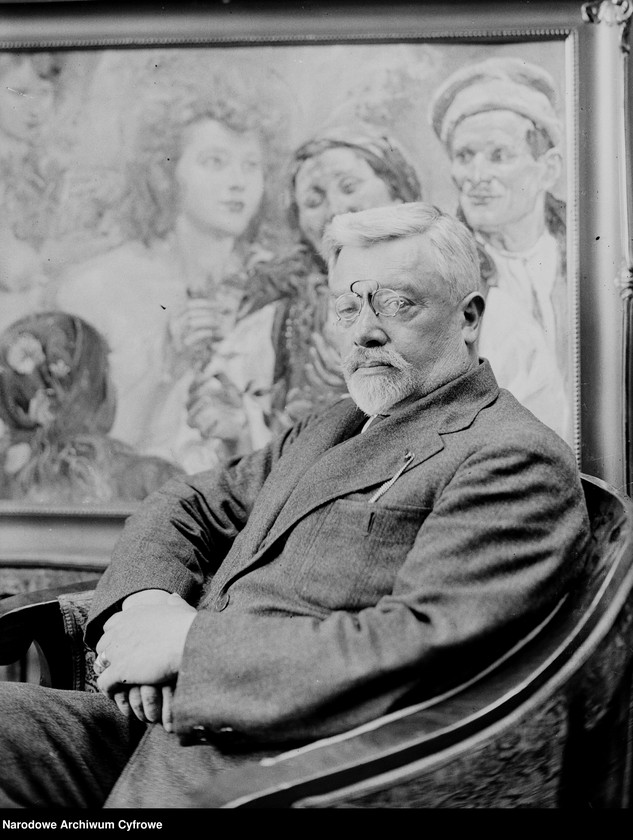


Wincenty Wodzinowski was born in 1866 in Igołomia, he began his artistic education in 1880 at the Drawing School in Warsaw, studying under Wojciech Gerson and Aleksander Kamiński. From 1881 to 1889, he continued his studies at the Academy of Fine Arts in Kraków under Władysław Łuszczkiewicz and Jan Matejko. During this time, he received a scholarship and an award for his first painting, "Na swojską nutę," which was presented at an exhibition organized by the Society of Friends of Fine Arts.
The monetary prize allowed Wodzinowski to further refine his skills in the studio of Aleksander Wagner at the Academy of Fine Arts in Munich and to spend time in Vienna. After completing his studies, he settled in Swoszowice, near Kraków, where he worked as a lecturer at the Higher Courses for Women in the Technical and Industrial Museum.
Wodzinowski's painting style was shaped by the historicism of Jan Matejko and the trends among Polish artists working in Vienna and Munich. He often depicted genre scenes reflecting the life of the countryside near Kraków and folk customs, as well as landscapes, portraits, battle scenes, allegorical, and religious themes. His paintings are characterized by vivacity, joyful expression, and a bright, lively color palette. In addition to easel painting, he also engaged in illustration and graphic art, creating lithographs. Wincenty Wodzinowski was also a co-author of the famous "Panorama Racławicka."
Wodzinowski exhibited his works both domestically and internationally, receiving numerous awards, including a silver medal at the Chicago exhibition in 1894. He was awarded the Commander's Cross of the Order of Polonia Restituta in 1938, as well as the Cross of Independence and the Cross of Valour. His works are held in collections at the National Museum in Warsaw, the National Museum in Kraków, and the Stanisław Fischer Museum in Bochnia.
Wincenty Wodzinowski passed away on July 5, 1940, in Kraków, leaving behind a rich artistic legacy that continues to inspire art lovers today.